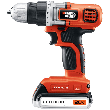Have you ever run into a situation where you require an extra electrical circuit to be added to your home? Instead of calling in an expensive electrician, you can simply do the work yourself. The reason for this is that, while you may require some specialized tools, you don't really require any specialized skills to begin adding a circuit. Simply follow these instructions, and you can easily have a new circuit in your home.
Materials:
- Cable
- Cable clamp
- Circuit breaker
- Hammer
- Screwdriver
- Lineman's pliers
- Combination stripper
- Flashlight
Procedure:
- Shut off the power. Whenever you begin working on any project that involves electricity, you need to be cautious. Electricity is extremely dangerous, and if you are not careful you can be seriously hurt, or even killed. To avoid this happening, when you start adding a new circuit, start by shutting off the main power. This will ensure that you do not get hurt accidentally. Simply make sure that you are working during the day time, and that you have a flashlight available for any additional light that you may need. Be careful that you do not touch any of the main, thick wires that come from outside and connect to the main breaker—those will still be live.
- Remove knockout slug. Look to the side of the service panel cover, and you should see a small round indent near the other cables that lead into or out of the service panel box. This indent is the knockout slug. Remove the slug by using a screwdriver and a hammer. Install a cable clamp into the resulting hole.
- Clamp new cable. Decide how far the wires need to travel to reach the breaker and the neutral bus. Avoid any possible tangles by planning a path around the perimeter of the box to reach your destination. Strip at least a foot more insulation sheathing than you think you will need from the wires, and then thread the wires through the cable clamp and secure the cable. Make sure that you do not accidentally over tighten the cables or you may damage them.
- Connect neutral wire. Locate the neutral wire (usually the white one) and run it towards an open terminal on the neutral terminal bus bar. Carefully bend the wire so that it will fit behind the panel cover, and then cut the wire to length and strip a little more insulation. You should only need to remove about 1/2 inch of insulation. Poke the exposed wire into the bus terminal and tighten the setscrew. Connect the ground wire to the ground bar (or, if there is no ground bar, to the neutral bus) in the same manner.
- Connect the new breaker. Run the hot wire (usually a black one) to the new breaker. If necessary, carefully bend the wire so that it can fit within the panel cover. Cut the wire down to length, and then remove 1/2 inch of insulation and insert the end into the new breaker terminal. If there is any bare wire still visible, remove the wire from the breaker and trim it down a little. Tighten the setscrew to hold the wire in place.
- Install and test the breaker. Before installing the new breaker, make sure that it is in the off position. Slip one side of the breaker under a tab that can be found to either the right or left of the hot bus bar. Push the opposite side onto the bus bar until the new breaker is flush with the other breakers, and you should hear a slight snap signifying that the breaker is in place. Restore the power to the breaker, and then turn the breaker on. Test any light switches that may be attached to this power line, or electrical outlets, and see if power is getting through.
Author Bio
Lee Wyatt
Contributor of numerous Tips.Net articles, Lee Wyatt is quickly becoming a regular "Jack of all trades." He is currently an independent contractor specializing in writing and editing. Contact him today for all of your writing and editing needs! Click here to contact. Learn more about Lee...
Caulking Your Tub
Why spend money on a plumber to re-caulk a leaky tub? Considering that it is one of the easiest home plumbing projects ...
Discover More
Replacing an Electrical Outlet
Replacing an outlet is one of the easier tasks that an amateur electrician can undertake. Here is how you can do this ...
Discover More
Cleaning Burn Stains while Cooking
Let's face it—even the most experienced chef has an occasional accident in the kitchen. One common form of kitchen ...
Discover More
More Home Improvement Tips
Choosing Bathroom Light Fixtures
For some reason, the bathroom tends to be one of the most overlooked rooms in the home when it comes to interior ...
Discover More
Troubleshooting a Door Bell
Troubleshooting a door bell is a great way to help determine exactly where a problem lies in your door bell. Not only can ...
Discover More
Adding an Outdoor Receptacle
There are times when you find yourself simply needing another electrical outlet or receptacle more than you currently ...
Discover More

Comments